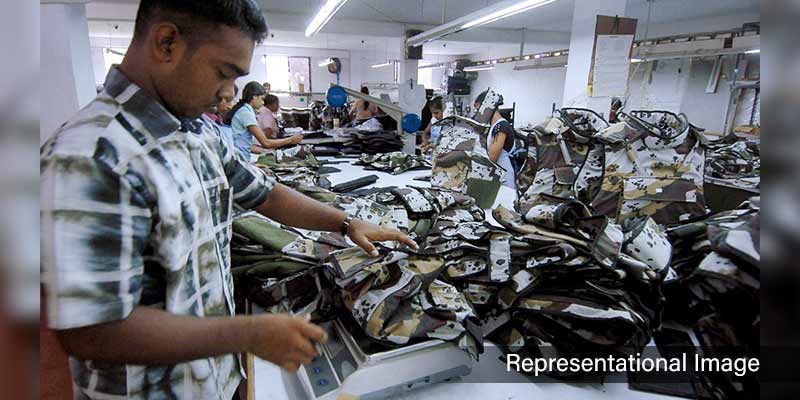- India
- Sep 07
Explainer - National Technical Textiles Mission
Union Textiles Minister Giriraj Singh said that India’s technical textile industry will cross the export target of $10 billion set for 2030. Singh also launched the compendium of the National Technical Textiles Mission.
India is the fifth largest producer of technical textiles globally with a market size of nearly $22 billion.
Technical textiles
• Technical textiles are materials and products manufactured primarily for technical performance and functional properties rather than aesthetic characteristics.
• They are futuristic which are used for various applications ranging from agriculture, roads, railway tracks, sportswear, bulletproof jackets, fireproof jackets, high-altitude combat gear and space applications.
• It is an advanced technology backed sunrise sector which is steadily gaining ground in India.
• Technical textiles products are divided into 12 broad categories depending upon their application areas.
They are:
i) Agrotech (shade-nets, crop-covers, etc),
ii) Meditech (diapers, PPEs, contact lenses, etc)
iii) Mobiltech (air-bags, nylon tyre cords, etc)
iv) Packtech (wrapping fabrics, jute bags, etc)
v) Sportech (artificial turfs, parachute, etc)
vi) Buildtech (architectural membranes, hoarding & signage, etc)
vii) Clothtech (umbrella cloth, interlinings, etc)
viii) Hometech (blinds, fire-resistant curtains, etc)
ix) Protech (bullet proof jackets, chemical protection clothing, etc)
x) Geotech (geo-grids, geo-composites, etc)
xi) Oekotech (environmental protection, etc)
xii) Indutech (conveyor belts, bolting cloth, etc.).
• The global technical textiles market is estimated at $212 billion in 2022 and is expected to reach $274 billion by 2027, growing at a CAGR of 5.2 per cent during 2022-27 backed by increasing global demand for technical textiles across industries and expanding base of new applicative products being developed at a rapid rate.
• In India, technical textiles industry is an emerging and important part of the textile industry. It is expected to reach a size of $28 billion in FY 24-25, increasing at a CAGR of 8.25 per cent over FY19-20. It contributes 0.7 per cent to India’s GDP and accounts for 13 per cent of India’s total textile and apparel market.
• The penetration level of technical textiles is low in India, varying between 5 and 10 per cent against the level of 30-70 per cent in developed countries.
National Technical Textiles Mission (NTTM)
• With a view to position the country as a global leader in technical textiles, National Technical Textiles Mission (NTTM) was approved in 2020 with an outlay of Rs 1,480 crore, valid up to March 31, 2026.
The Mission has four components:
Component-I (Research, Innovation and Development): Its focus is on research, development and innovation and has an outlay of Rs 1,000 crore. It includes fundamental research as well as application-based research in agrotech, geotech, meditech, mobiltech and sportech. It will also focus on the development of bio-degradable technical textiles and indigenous textiles machinery.
Component–II (Promotion and Market Development): The Mission will aim at average growth rate of 15-20 per cent per annum taking the level of domestic market size to $40-50 billion by 2024, through market development, market promotion, international technical collaborations, investment promotions and ‘Make in India’ initiatives.
Component–III (Export Promotion): The component aims at export promotion of technical textiles enhancing from the current annual value of approximately Rs 14,000 crore to Rs 20,000 crore and ensuring 10 per cent average growth in exports per year An Export Promotion Council for Technical Textiles will be set up for effective coordination and promotion activities in the segment.
Component-IV (Education, Training, Skill Development): Education, skill development and adequacy of human resources in the country is not adequate to meet the technologically challenging and fast growing technical textiles segment. The Mission will promote technical education at higher engineering and technology levels related to technical textiles and its application areas covering engineering, medical, agriculture, aqua-culture and dairy segments.
• The Mission will focus on usage of technical textiles in various flagship missions, programmes of the country including strategic sectors.
• The use of technical textiles in agriculture, aquaculture, dairy, poultry, Jal Jeevan Mission, Swachh Bharat Mission and Ayushman Bharat will bring an overall improvement in cost economy, water and soil conservation, better agricultural productivity and higher income to farmers per acre of land holding in addition to the promotion of manufacturing and export activities.
• The use of geo-textiles in highways, railways and ports will result in robust infrastructure, reduced maintenance cost and higher life cycle of the infrastructure assets.
• There is no provision under NTTM to release the funds state-wise.
Objectives of NTTM:
• Promote usage of technical textiles in various flagship missions, programmes including strategic sectors in India.
• Improve penetration level of technical textiles and upgrade skill sets of the workforce.
• Develop indigenous machineries and process equipment for technical textiles to promote ‘Make In India’ and enable competitiveness of the industry.
• Promotion of innovation amongst young engineering/ technology/science standards and graduates; along with creation of innovation and incubation centres and promotion of ‘startup’ and ‘ventures’.
GREAT Scheme under NTTM
• To support the ecosystem of technical textiles in the country, the government has launched ‘Grant for Research and Entrepreneurship across Aspiring Innovators in Technical Textiles’ (GREAT) Scheme under the National Technical Textile Mission.
• Under the scheme, support is given to young innovators/entrepreneurs in technical textiles by providing grant-in-aid up to Rs 50 lakh to translate their ideas into commercial technologies/products.
Manorama Yearbook app is now available on Google Play Store and iOS App Store



